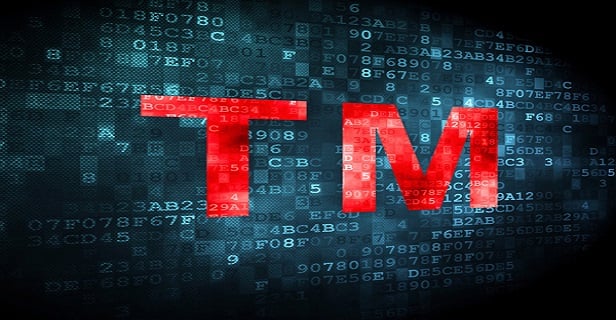Features

Digital Advertising: Customer Confusion and Trademark Infringement
In the absence of a federal statutory scheme specifically aimed at digital advertising practices, the courts have focused on consumer-facing issues covered by existing law, such as privacy, transparency, and deceptive or misleading advertising practices. But digital advertising technology can also present new challenges in copyright and trademark protection.
Features

Copyright Plaintiffs Can Reach Back More Than Three Years In Seeking Infringement Damages, Ninth Circuit Rules
How far back from accrual of a claim may a plaintiff reach for copyright damages?
Columns & Departments

IP News
Copyright Standing and Fifth Circuit Trade Dress Factors
Features

UPDATE: Did the Supreme Court's 'Arthrex' Decision Open Pandora's Box?
In June 2021, the Supreme Court ruled in U.S. v. Arthrex that the statutory scheme appointing Patent Trial and Appeal Board administrative patent judges to adjudicate IPRs violates the appointments clause of the U.S. Constitution. Specifically, the Court concluded that because APJ decisions in IPR proceedings are not reviewable by a presidentially appointed and Senate-confirmed officer, such determinations are not compatible with the powers of inferior officers. The PTO later decided that it would not accept requests for director review of institution decisions. This policy is now also being questioned in Arthrex's wake.
Features

Quebec's Bill 96 and Trademarks: Product Packaging and Labelling
The modifications brought by the Quebec's Bill 96 will have a far-reaching impact on how businesses use trademarks on product packaging, labelling, public signage and in commercial advertising. This article is Part One of a two-part series on Bill 96 and trademarks and covers the effects as they relate to product packaging and labelling and how best to comply with these new provisions.
Features

Proper Notice of Trademark Rights: Using Trademark Symbols for Three-Dimensional Packaging and Product Designs
Among the most common questions trademark attorneys are asked is what the differences are between the symbols ®, TM, and SM. When should such symbols should be used? Where should they appear? How frequently? Do they even need to be used at all?
Features

NFTs and IP Protection
the legal frameworks governing NFTs — which could significantly impact the risks and rewards of buying or selling NFTs — are still catching up. This article addresses another key legal dimension of NFTs: intellectual property protections.
Features

Recommendations for Evolving Patent Eligibility of Hardware
Regardless of whether a patent practitioner's clients favor a stricter or more lenient eligibility regime, patent eligibility decisions continue to evolve. We need a line drawn for what practitioners expect to be clearer. Hardware inventions are facing patent eligibility challenges that would have seemed more likely in software inventions. Recent court decisions have shown that what once made a hardware invention eligible may no longer fly.
Features

Fishing for Joint Patent Ownership Under 'BASF v. CSIRO'
A recent Federal Circuit opinion sheds light on the process for settling co-ownership disputes pursuant to an underlying agreement. Although the precedential opinion does not change the rules of contract interpretation, it suggests considerations when drafting ownership agreements.
Features

Second Circuit Interprets 'Executed By the Author' In Copyright Act's §203 Grant Termination Provision
Composers of pre-1978 works often assigned both the initial and renewal copyright terms in their works when signing songwriter agreements with music publishers. But what happens when a grant of the copyright renewal term of a pre-1978 work has been made post-1977?
Need Help?
- Prefer an IP authenticated environment? Request a transition or call 800-756-8993.
- Need other assistance? email Customer Service or call 1-877-256-2472.
MOST POPULAR STORIES
- The DOJ's Corporate Enforcement Policy: One Year LaterThe DOJ's Criminal Division issued three declinations since the issuance of the revised CEP a year ago. Review of these cases gives insight into DOJ's implementation of the new policy in practice.Read More ›
- The DOJ's New Parameters for Evaluating Corporate Compliance ProgramsThe parameters set forth in the DOJ's memorandum have implications not only for the government's evaluation of compliance programs in the context of criminal charging decisions, but also for how defense counsel structure their conference-room advocacy seeking declinations or lesser sanctions in both criminal and civil investigations.Read More ›
- How to TOOT Your Own Horn: Exceptional Self EvaluationsIt's that time again. As the year comes to a close many firms are beginning the associate review process. Even if your firm does not have a formal review process I recommend that you write a self-evaluation that outlines your achievements and specifies your goals for the coming year.Read More ›
- The FTC Gets Into the College Athlete NIL GameAs national champions are crowned in men's and women's basketball, hundreds of thousands of college athletes are entering the influencer marketplace for the first time and now find themselves attractive candidates in the fast growing influencer marketing arena. With influencer marketing potentially providing a 5x return on investment, many brands are eager to get into the industry, but it doesn't come without risks as the FTC Commissioner is taking a closer look at the use of influencers for marketing.Read More ›
- Use of Deferred Prosecution Agreements In White Collar InvestigationsThis article discusses the practical and policy reasons for the use of DPAs and NPAs in white-collar criminal investigations, and considers the NDAA's new reporting provision and its relationship with other efforts to enhance transparency in DOJ decision-making.Read More ›
